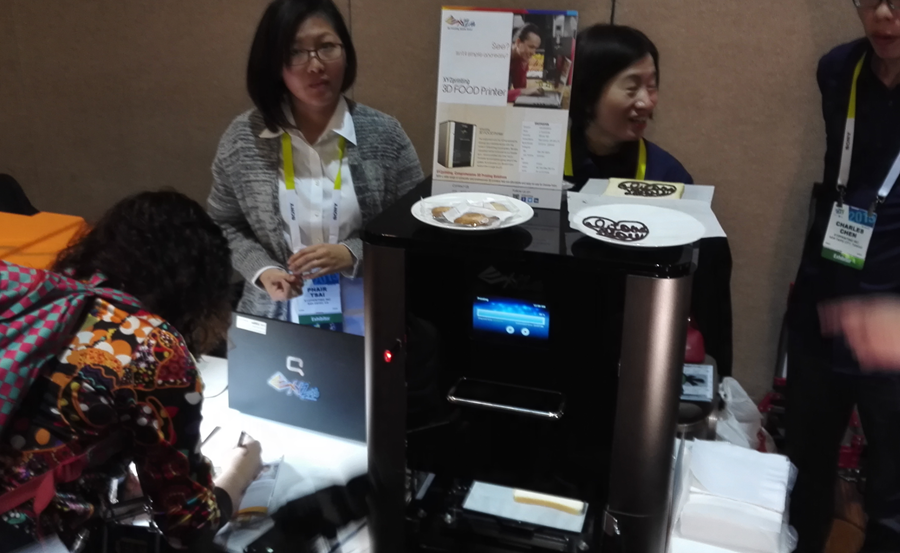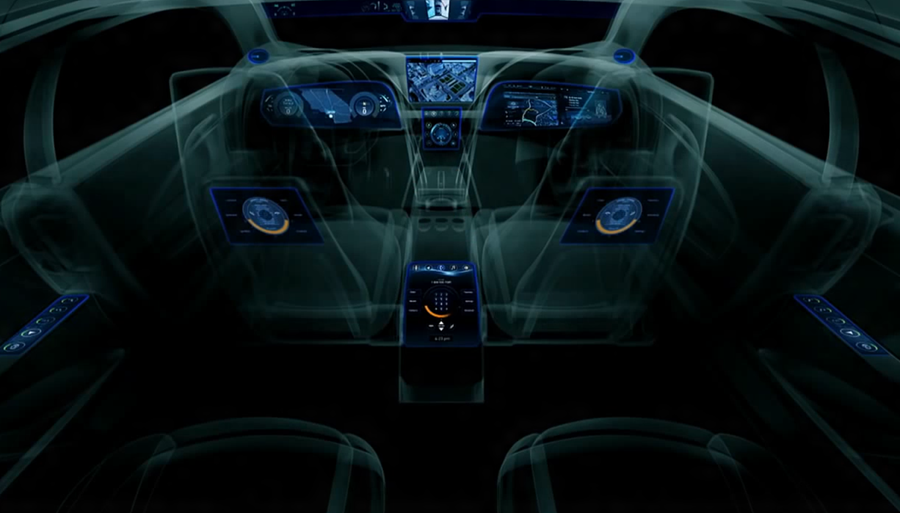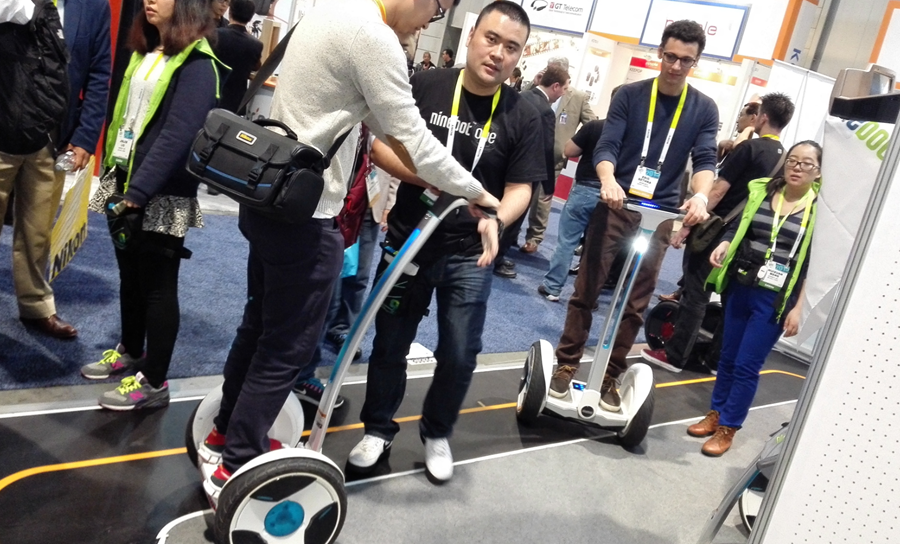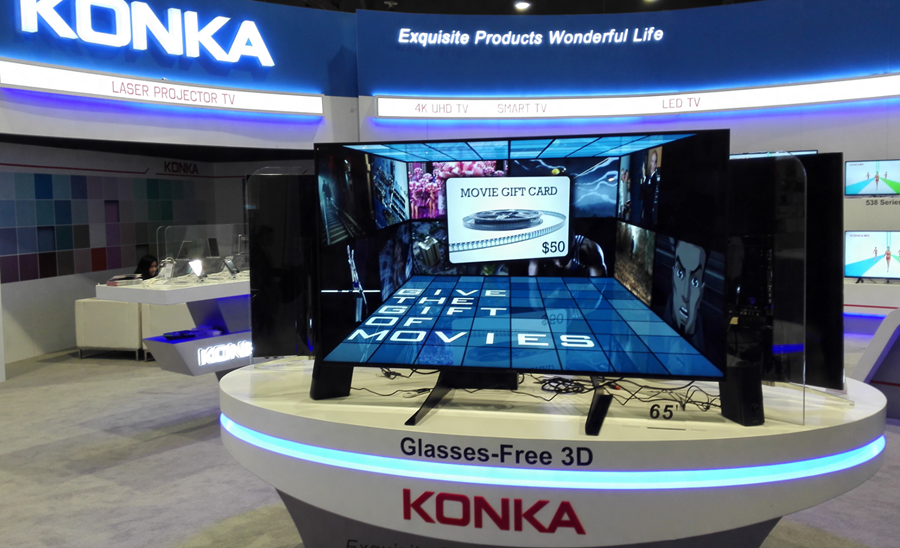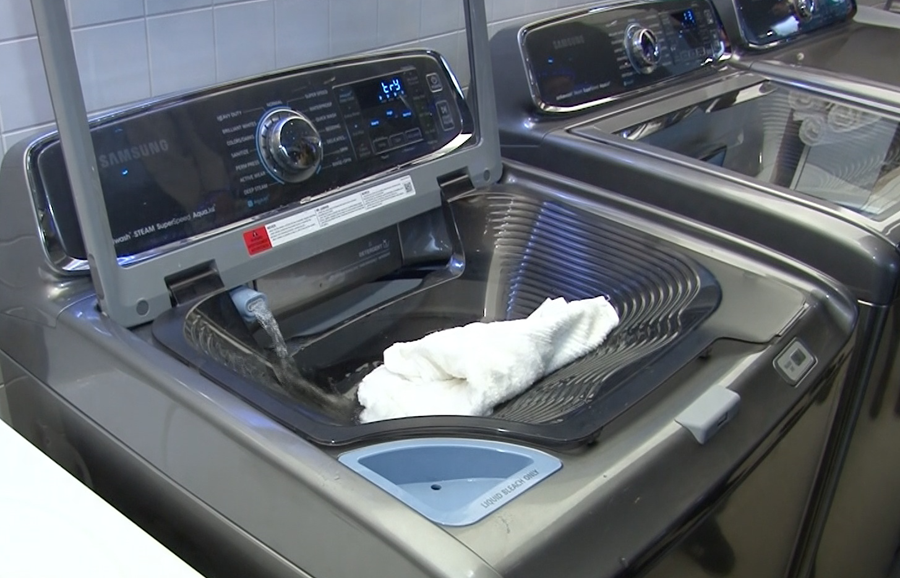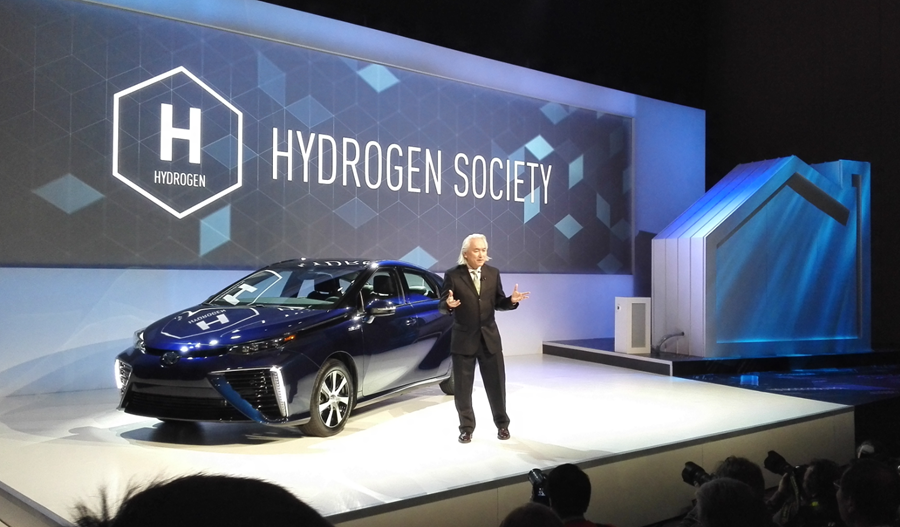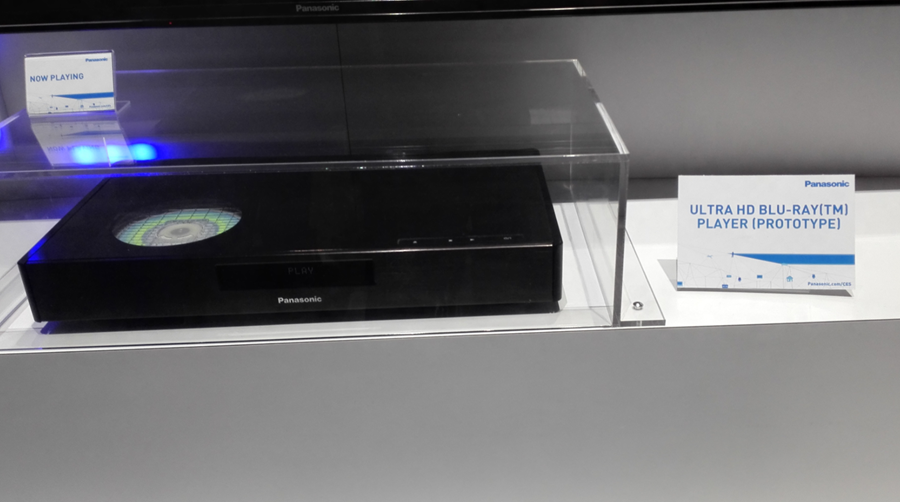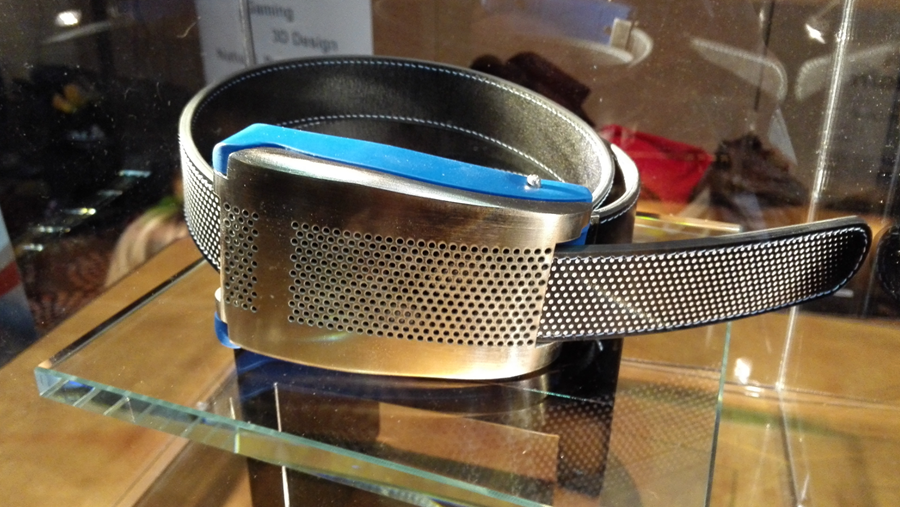After covering the Consumer Electronics Show for years remotely did nothing to prepare me for the immense scale of the event. You hear others suggest it’s big, but the biggest trade show on the planet is on a scale you can’t comprehend.
CES 2015 was the largest show in history, with more than 2.2 million net square feet of exhibit space. Taking over Las Vegas for a week, the more than 3,600 exhibitors previewed the latest in innovation and the future of technology. Key areas for the show were car tech, 4K TVs, Internet of Things / connected devices, fully autonomous driverless vehicles, 3D printers, drones and gaming.
Last week, CES played host to more than 170,000 industry professionals (and media) from around the world. More than 45,000 of those attendees came from outside the United States, proving the international importance of the show.
With so much announced in a week, its important to take a second and reflect on the best and worst products from the show.
Best Products of CES2015
XYZ Printing 3D Printed Food
I can now say I’ve tasted the future. XYZ Printing may not be a company a lot of people in Australia are familiar with, but they do have a good reputation in 3D printing with plastics. This year they’re showed up to CES with the 3D FOOD Printer. Able to print a variety of treats, they printed and provided samples of chocolate and cookies. I sampled the cookie and it tasted great, considering the raw ingredients are basically the same, it’s not entirely surprising.
Expect plenty of brands to pickup these guys to put a smile on their customer’s faces with an edible 3D printed version of their corporate logo. There’s no shortage of things you can print onto, bread, cakes, you name it, lots of possibilities here.
360 degree camera
We’re all used to watching flat, boring, 2 dimensional videos. Well Giroptic were showing off a device that captures video from 360 degrees. They announced at the show they’re working with Google and YouTube will soon add support for the format. Often when we’re at an event, the action happens all around us, not just the direction we happen to be facing a camera. This captures everything and allows people to choose the direction they watch after the fact.
This will be experienced by most on phones, which use the accelerometer to detect your movement and spin the video accordingly. Something I got to experience at the show was to watch the footage through Oculus Rift (dev kit 2). This virtual reality headset allows you to turn your head and with the video I was watching, either experience a rollercoaster ride, or turn around and watch the faces of terror in the seats behind you.
This can also double as a full room webcam thanks to a simple light bulb attachment.
LG UHD OLED TVs.
Just a few short years ago we seen an 11 inch OLED display for $40,000. Now it seems LG are the only brand still investing in the technology, but I’m seriously glad they are. While others like Samsung and Sharp are getting insane black levels on LED displays, there was nothing at CES that I seen that was like OLED. The reason black levels are so black and colours really pop on OLED is that there is no light coming from the black pixels, the are literally turned off.
The TV in your living room probably has backlighting from the side as this is the easiest / cheapest way to build panels, but the best picture experience is created by having no light from areas of the picture that are supposed to be black. The OLED TVs coming in 2015 are now 4K in resolution and available in massive sizes at a ‘relatively’ affordable price.
Sharp’s free-form displays
Look around at the displays in your life, unless you’re wearing a Motorola 360, they’re basically all the same shape, rectangles. Sharp have nailed a production technique that allows them to create displays in an almost infinite number of shapes. The first example we seen of these new free-form displays was the challenging formation of a vehicle instrument cluster.
This means the dials in our cars and many other displays in our lives don’t have to be confined to squares or rectangles, this just needs to be backed up with development software that support new display shapes.
Nvidia Drive powered by Tegra X1
One of the boldest statements at the show is Nvidia’s vision that the fastest computer in your life will live in your car. Not on your desk, not in your pocket, but in your car and that’s all down to the intense compute requirements created by having lots of displays to power, as well as on-board driverless and safety systems.
While most auto makers are still relying on lidar and sensors to form a vision of what’s around the car, graphics maker Nvidia says the future is a combination of high definition cameras and a layer of software. Nvidia did more than just talk, they showed what’s been achieved in their labs and to be honest, it’s awesome. The world is an incredibly variable environment and they’re looking not just for full human detection, but if the human is partially obscured, they’re look at partial human body parts like leg, arm, head etc and and using predictive analysis can identify objects that aren’t yet, but may become potential collisions the system has to avoid.
I agree with Nvidia, video cameras are increasing at such a rapid rate, that detecting a speed sign will soon be done at far beyond the range of the human eye. The challenge for them is to convince more auto makers to use their hardware. Powering all this is a new high performance chip by Nvidia known as the Tegra X1, this has the same processing power as the best supercomputer 15 years ago. The Drive PX board for vehicles has 2x Tegra X1 chips on the same board and inputs for 12 high resolution cameras.
Ford tackling global transportation problems
Some brands were showing more the ability to summon a car from your mobile, others were showing autopilot on the highway. While impressive, these are subsumed by what I heard from Ford. They may be stopping local production, but the company that changed what transport means, are now changing focus. The company are now looking at the transportation issues of the world and have setup 25 experiments across the globe to learn more about these problems and how data, software and services can solve it.
They’ll continue to sell cars, but the company is as much a technology company as it is a motoring one. One example of the future for Ford is using devices like OpenXC to (with permission) monitor the behavior of shock absorbers over time. They can use an algorithm to detect what hitting a pot hole looks like in the data. By cross-referencing the GPS co-ordinates at the time, it’d be easy to create a service where they aggregate the data as a service that local council and government can use to prioritise road works.
They are seriously thinking on a different level than every other manufacturer at the show. This year there were a record 10 auto makers at CES.
SAP + Panasonic sports analytics
This product will change sport forever. Using combined video footage from 4 Panasonic cameras to create a full field view, SAP are using software to analyse and track sports matches in an entirely new way. Typically to collect data on the sporting field, players are required to wear GPS trackers to measure how far they ran and contrast their positions against set plays allocated by the coach. At times we’ve also seen experiments with trackers being added to the ball as well.
Typically most sporting games have statisticians on the sidelines, marking down everytime a player gets a kick, tackle, goal etc. All of this will change with SAP’s software live algorithms that track player and match data.
Coaches can immediately see how effective a player is and if need by, replace them on the field, or reposition with someone performing better. Just tap on the player and get their stats. This is only in prototype, but is easily one of the most impressive pieces of technologies at the show. The company says the soccer example is just the start, any sport with players and a ball could take advantage of this. It may sell to teams, broadcasters, or even to enthusiasts to monitor their favourite players.
Worst Products of CES2015
Segways
It’s cute how come companies like Ninebot are still trying to make Segways a thing. Like many tech enthusiasts, I can appreciate them as a technical achievement, but there’s no way you can get around looking ridiculous when riding one. I’m 6’3’ and standing on a Segway-like device will have me easily at 6’6’ or higher, add in the legally required helmet and there’s simply no way to look cool.
It was once suggested these would change transportation forever, in 2015, they’re most successfully used for city tours. At CES we see some coloured LED lights and new form factors, but for electric transportation, these are going nowhere fast.
Glasses-free 3D TV
3D was basically a dirty word at CES this year, almost none of the display manufacturers were promoting it. There’s no two ways about it, 3D in the home is a failure. What was originally thought to be the next big cash cow for TV makers, the technology had plenty of problems. One of the biggest was the issue of glasses, especially those expensive active glasses that would cost hundreds of dollars to kit out the whole family.
In an effort to combat this criticism, TV manufacturers began investing in glasses-free 3D, imagining that’s the thing that would spark the sales they longed for. While viewing angles have improved, the technology simply isn’t there. To be honest, the one manufacturer showing off their 2015 models, were nothing more than a blurry mess regardless of where you stood. It’s just not good, thankfully most are focused on 4K and HDR, which are far more impressive impacts on picture quality and the viewing experience.
Samsung sink in a washing machine
This one is just puzzling with a capital P. For some reason Samsung are adding a sink to the top of one of their washing machines. It seems the waste water from this goes directly into the machine tub. Even with dirty clothes, it seems a bizarre expectation to put them into dirty water. I think I’m a pretty smart guy, but can’t work this one out. Never mind every laundry ever built already has a sink.
Toyota’s Hydrogen vehicle
With Electric vehicles so clearly the way forward, Toyota are driving off in their own direction. They believe hydrogen (or water) is the best fuel source to power vehicles into the future. With no infrastructure in place, they announced at CES that they would open source thousands of patents to spawn others to help with the build. The problem is this is only till 2020, this can’t be inviting for investors.
Other than the obvious costs of adding hydrogen and EV recharge bays to every petrol station, they’re very wrong about one thing. Their core belief is that water is the most plentiful resource on the planet, that’s simply not true. As we know droughts are relatively common and building a transportation network that relies on that is a bad strategy. The best source of energy that doesn’t go through droughts, is the sun. Sure you’ll have some days more sunny than others, but as solar evolves, efficiencies of energy collection from the sun, even on cloudy days will and is improving with each generation.
Panasonic’s UHD Blu-ray prototype
Digital distribution of movies is exploding thanks to it’s convenience. Buying or renting a movie in 2015 is as easy as clicking a few buttons on the control, then sitting back and enjoying it stream live. Panasonic are suggesting we take a step backwards by showing off a prototype of a new UHD Blu-Ray optical disc format. Said to hold up to 100GB of data, the only disc was locked away under this casing.
No thanks Panasonic, our internet may not be perfect everywhere, but streaming is so clearly the future for content distribution, time, effort and money should be invested there instead.
Smarter Coffee Maker
Last year this company introduced the Wi-Fi connected kettle, but this year they’re took a Wi-Fi enabled coffee maker. The theory is you can wakeup and start the coffee brewing from your phone. There’s a lot of assumptions about that. First that the you’ve cleaned the filters, inserted new coffee and water and the pot doesn’t already contain coffee.
Worst case, you end up with an automated coffee scented fire or flood in your kitchen, best case, you save 30 seconds. This falls firmly in the lazy category, rather than a product that genuinely makes our lives better.
Self tightening belt
We’ve all been there, especially on Christmas Day, you eat too much and you need to let out your belt to support your swollen belly. A difficult process right? Nope, it’s really not. Despite that, at least one company is trying to solve this problem that doesn’t really exist. Stand up and it’ll tighten before your pants fall down, sit down and it’ll release in tension so sitting is more comfortable.
This product is also a fitness tracker, but the size makes it a complete failure. Also belts aren’t expensive and the idea of paying hundreds for a smart belt, isn’t going to fly unless it has far more utility and your name is batman.


